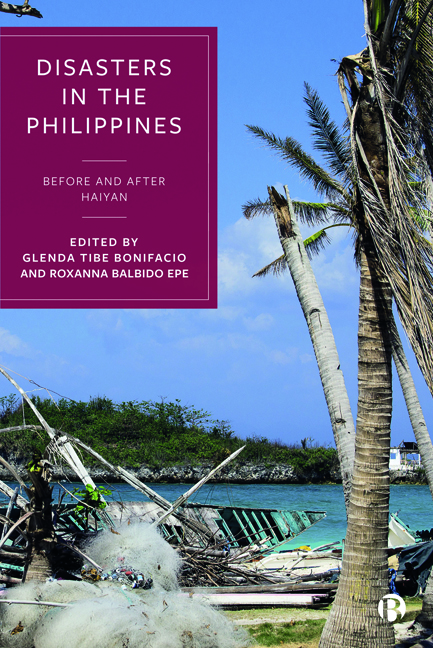15 - Religion in the Public Sphere in the Aftermath of Typhoon Haiyan
Published online by Cambridge University Press: 18 January 2024
Summary
Introduction
One of the major challenges faced by several developing countries such as the Philippines, Bangladesh, and Pacific Island countries like Tonga and Vanuatu during the contemporary period is the perennial onslaught of cyclones, typhoons, or hurricanes which have grown in intensity and frequency of occurrence over the years due to climate change (Alliance Development Works 2016). In 2016, the Philippines ranked third among 145 countries as being most at risk due to climate change (Alliance Development Works 2016). These natural hazards have brought about tremendous destruction to lives and properties. The magnitude of the crisis spawned by natural calamities is heightened by the conditions of poverty and sociocultural and political divisions and issues (Wisner et al 2004; Gaillard 2007; Gaillard et al 2009). The most vulnerable to disasters are communities that are marginalized economically, geographically, and politically, often living in hazardous places and disregarded by those in power (Gaillard et al 2009). In addition, they usually have inadequate social protection and limited social capital (Gaillard et al 2009). Thus, disasters reflect the failure of development (Gaillard et al 2009).
On November 8, 2013, super typhoon Yolanda (Haiyan), with a speed of 315kph and powerful winds of 378kph, made its first landfall in Guian, Eastern Samar. It had a 48km width and brought about sea surges rising to 4m, with 70– 80% of homes, buildings, and churches in its path demolished (Caritas-Philippines 2014, 5). It was dubbed the strongest tropical cyclone at landfall in recent history (Caritas-Philippines 2014, 5). It brought devastation to the central portion of the Philippine archipelago, the Visayas. Aside from the province of Samar, Haiyan brought havoc to Leyte province particularly its capital, Tacloban City, as well as the southern towns of Palo, Tanauan, and Ormoc City, and the islands of Cebu, Panay, and Palawan. United Nations officials estimated 11 million people were affected with many left homeless and at least 6,300 deaths as bodies were still being recovered months after the typhoon struck (Caritas-Philippines 2014, 5). Two years later, however, the number of fatalities in the archdiocese of Palo in Leyte province alone rose to 7,500 with many persons still missing (Reyes 2015). Others estimate the fatalities to have reached at least 10,000 persons in Tacloban City alone as its residents bore the brunt of the storm surge (IBON 2015).
- Type
- Chapter
- Information
- Disasters in the PhilippinesBefore and After Haiyan, pp. 317 - 347Publisher: Bristol University PressPrint publication year: 2023



